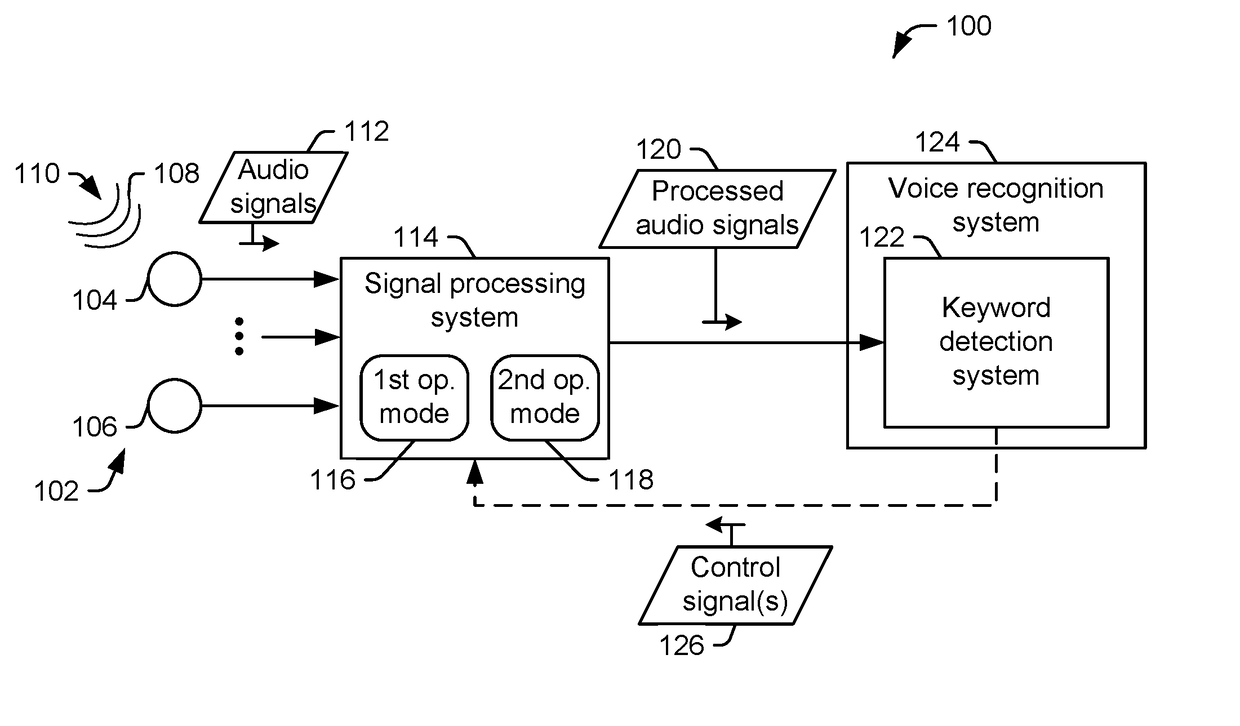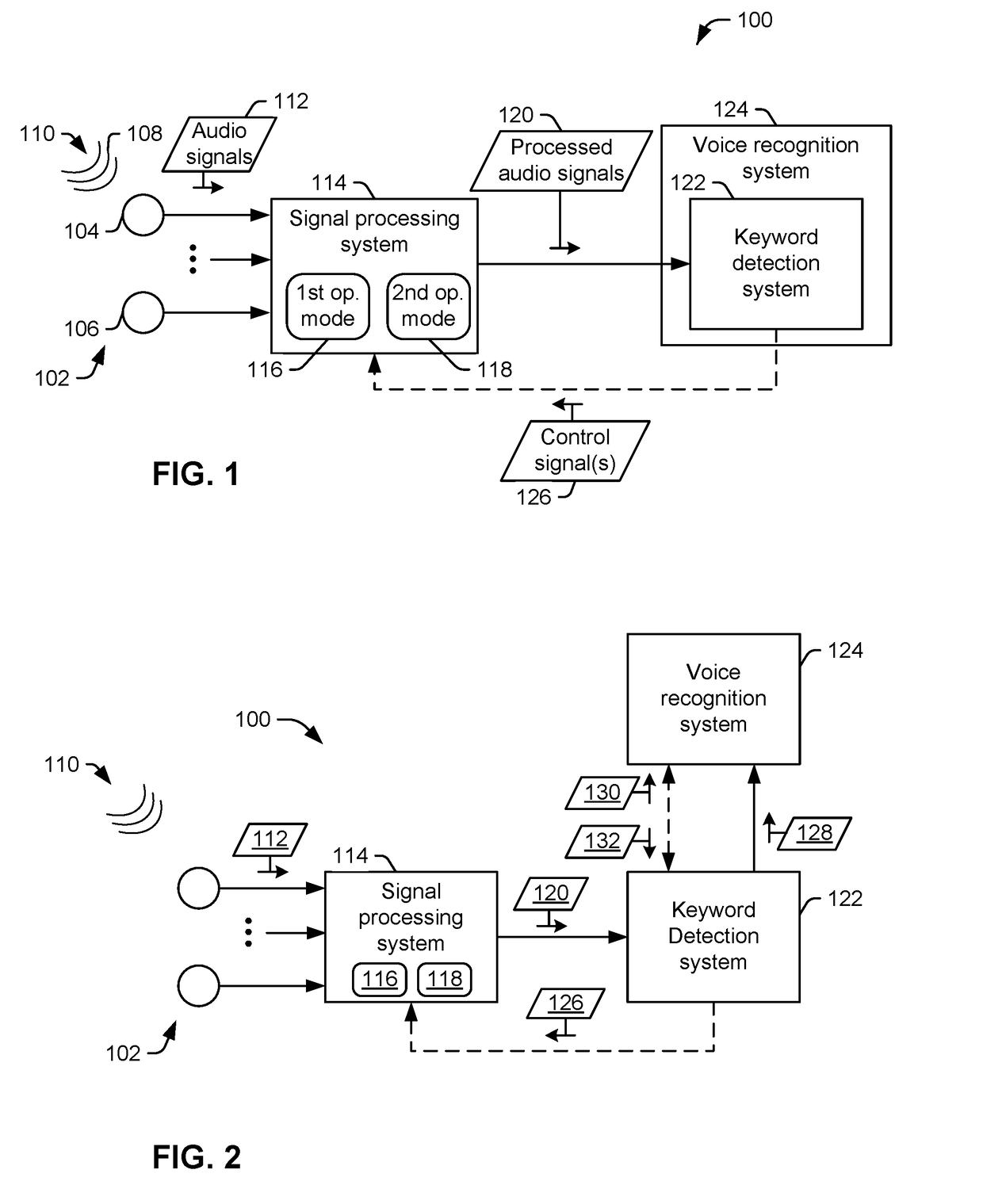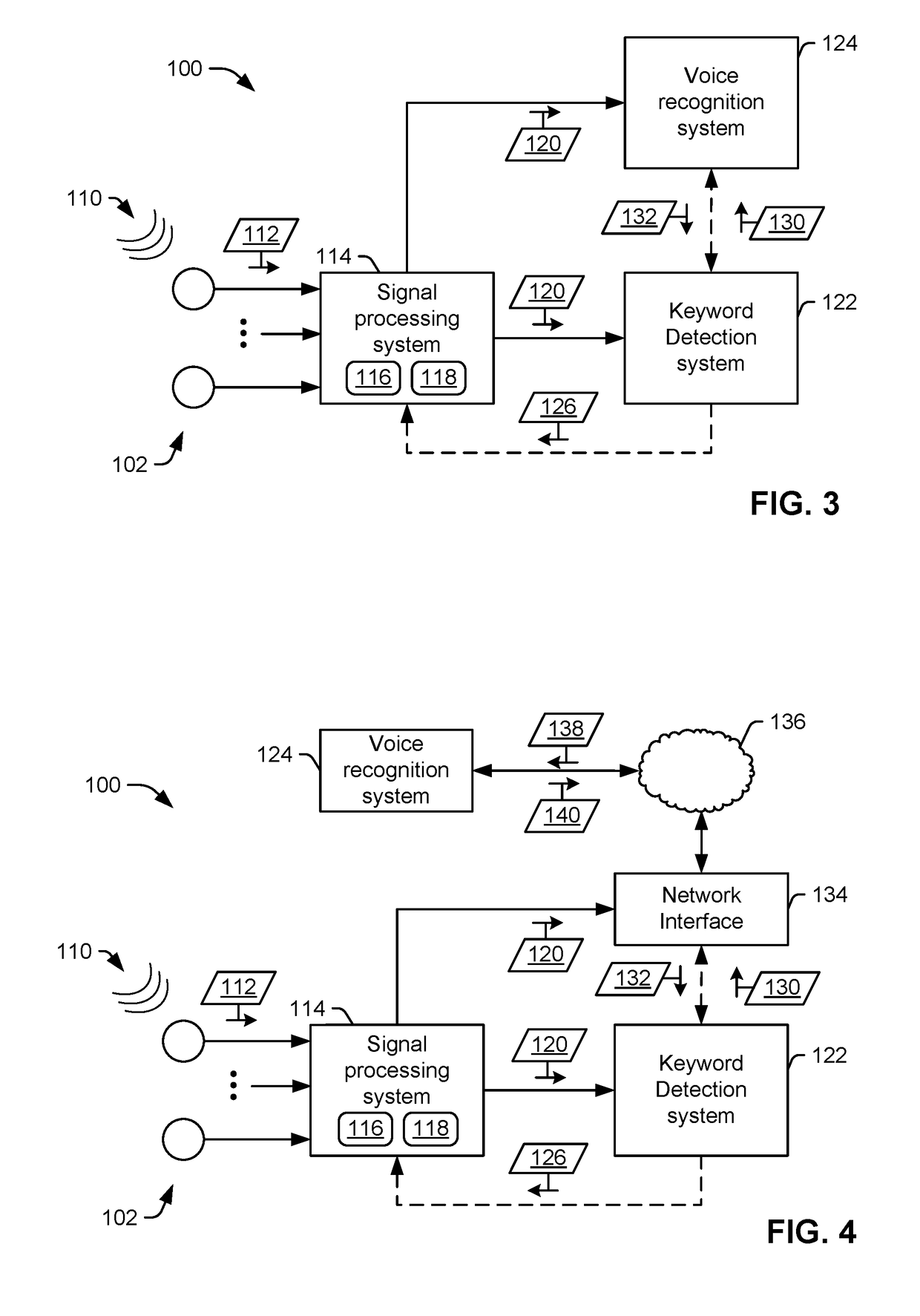Far-field audio processing
a far-field audio and processing technology, applied in the field of processing sound, can solve the problems of less processing resources, large signal to noise ratio (snr), and more constrained keyword detection, so as to facilitate processing voice input and improve the detection or recognition of voice inpu
- Summary
- Abstract
- Description
- Claims
- Application Information
AI Technical Summary
Benefits of technology
Problems solved by technology
Method used
Image
Examples
Embodiment Construction
[0028]FIG. 1 is a block diagram of a particular illustrative example of an apparatus 100 configured to process sound of a far-field acoustic environment 110. The apparatus 100 includes a signal processing system 114 coupled to a keyword detection system 122. As described further below, the keyword detection system 122 is configured to provide a control signal 126 to the signal processing system 114 based on a result of a keyword detection process. The control signal 126 causes the signal processing system 114 to change an operational mode of the signal processing system 114.
[0029]Generally, as used herein, the term “acoustic environment” refers to physical space surrounding the apparatus 100 in which sound is present and propagates. The term “far-field” distinguishes the acoustic environment 110 from a “near-field” acoustic environment. While processing sound in a near-field acoustic environment, a particular target sound (e.g., a spoken command or keyword) may have a magnitude that...
PUM
 Login to View More
Login to View More Abstract
Description
Claims
Application Information
 Login to View More
Login to View More - R&D
- Intellectual Property
- Life Sciences
- Materials
- Tech Scout
- Unparalleled Data Quality
- Higher Quality Content
- 60% Fewer Hallucinations
Browse by: Latest US Patents, China's latest patents, Technical Efficacy Thesaurus, Application Domain, Technology Topic, Popular Technical Reports.
© 2025 PatSnap. All rights reserved.Legal|Privacy policy|Modern Slavery Act Transparency Statement|Sitemap|About US| Contact US: help@patsnap.com



